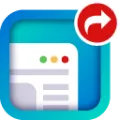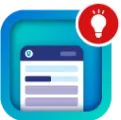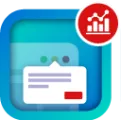Create Letterhead Email Templates in Salesforce Classic
- Do one of the following:If you have permission to edit public templates, from Setup, enterEmail Templates in the Quick Findbox, then select Classic Email Templates.If you don’t have permission to edit public templates,go to your personal settings. Enter Templates in the Quick Find box, then select Email Templates or My Templates—whichever oneappears.
- If you have permission to edit public templates, from Setup, enterEmail Templates in the Quick Findbox, then select Classic Email Templates.
- If you don’t have permission to edit public templates,go to your personal settings. Enter Templates in the Quick Find box, then select Email Templates or My Templates—whichever oneappears.
- Click New Template.
- Choose HTML (using Letterhead) and clickNext.
- Choose a folder in which to store the template.
- To make the template available for use, select theAvailable For Use checkbox.
- Enter an Email Template Name.
- If necessary, change the Template Unique Name. This unique name refers to the component when you use the Lightning Platform API. In managed packages, this unique name prevents naming conflicts in package installations. This name can contain only underscores and alphanumeric characters, and must be unique in your org. It must begin with a letter, not include spaces, not end with an underscore, and not contain two consecutive underscores. With the Template Unique Name field, you can change certain components’ names in a managed package and the changes are reflected in a subscriber’s organization.
- Select a Letterhead. The letterhead determines the logo, pagecolor, and text settings of your email.
- Select the Email Layout. The email layout determines the columnsand page layout of the message text. To see samples, click View Email LayoutOptions. Tip In an existing template, you can’t change thisfield. To use a different email layout after you’ve created a template, createanother template.
- If desired, choose a different character set from theEncoding drop-down list.
- Enter a Description of the template. Both template name anddescription are for your internal use only. The description is used as the title of anyemail activities you log when sending mass email.
- Click Next.
- Enter a subject for the email you send. This can be edited later, when using thetemplate.
- Enter the text of the message by clicking any section and entering text. To preventanyone using the template from editing a section, click the padlock icon.
- Change the style of your text by selecting the text and using the format toolbar.
- If desired, enter merge fields in the template subject and body. When you send anemail, these fields are replaced with information from your lead, contact, account,opportunity, case, or solution.
- Click Next.
- If desired, enter the text-only version of your email or clickCopy text from HTML version to automatically paste the textfrom your HTML version without the HTML tags. The text-only version is available torecipients who can’t view HTML emails. Warning We recommend that you leave the text-only version blank. If youleave it blank, Salesforce automatically creates the text-only content based onthe current HTML version. If you enter content manually, subsequent edits to theHTML version aren't reflected in the text-only version. When left blank, thetext-only content is automatically created when sending an email via the UI. Ifyou use that same template to send email via the API or APEX, you must provide thetext-only content. Remember to update text-only content when you change the HTMLcontent.
- Click Save.





